#spectra paris
Text
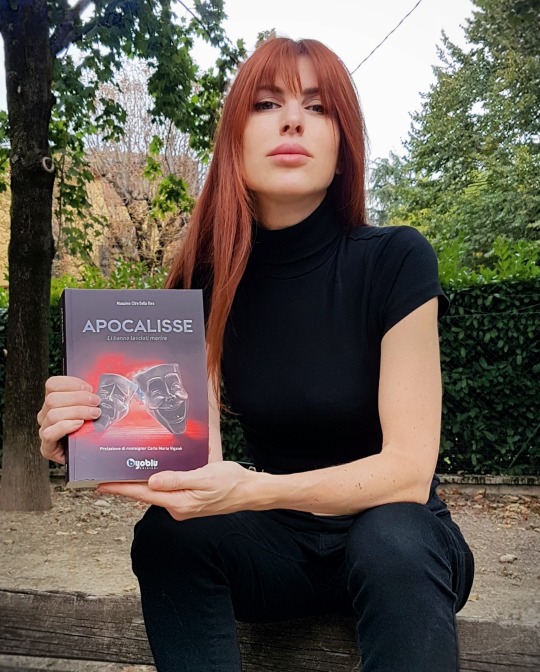
Elena Alice Fossi doesn't give a damn about the consequences and proudly shows the book "Apocalisse. Li hanno lasciati morire" by doctor Massimo Citro Della Riva, "condemned" by the mainstream as if it was even worse than a manual for would-be murderers! There are those who insistently call for the book to be censored, a kind of Middle Age inquisition…. You are great, Alice!!! They all pose as rebels out there, but they look more like clowns. It seems that today's artists never want to go against the Globalist System, with rare exceptions. And you, Alice, are a wonderful exception! 🖤🔥
#elena alice fossi#elenaalicefossi#kirlian camera#kirliancamera#spectra paris#stalingrad valkyrie#singer#vocalist#lead vocalist#lead singer#musician#composer#songwiter#music producer#electronica#electronic music#industrial music#avantgarde music#avant rock#experimental rock#experimental music#electronic rock#avantgarde metal#electro#dark electro#last rebels#dark angel#great artists#anonymous#rebellion
12 notes
·
View notes
Photo
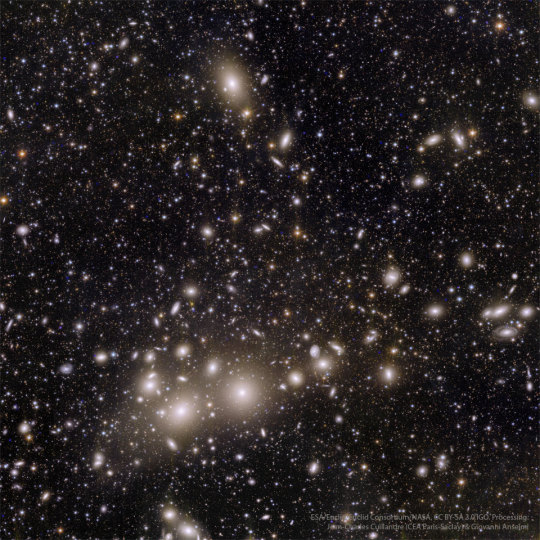
2023 November 8
Perseus Galaxy Cluster from Euclid
Image Credit & License: ESA, Euclid, Euclid Consortium, NASA; Processing: Jean-Charles Cuillandre (CEA Paris-Saclay) & Giovanni Anselmi; Text: Jean-Charles Cuillandre
Explanation: There's a new space telescope in the sky: Euclid. Equipped with two large panoramic cameras, Euclid captures light from the visible to the near-infrared. It took five hours of observing for Euclid's 1.2-meter diameter primary mirror to capture, through its sharp optics, the 1000+ galaxies in the Perseus cluster, which lies 250 million light years away. More than 100,000 galaxies are visible in the background, some as far away as 10 billion light years. The revolutionary nature of Euclid lies in the combination of its wide field of view (twice the area of the full moon), its high angular resolution (thanks to its 620 Megapixel camera), and its infrared vision, which captures both images and spectra. Euclid's initial surveys, covering a third of the sky and recording over 2 billion galaxies, will enable a study of how dark matter and dark energy have shaped our universe.
∞ Source: apod.nasa.gov/apod/ap231108.html
156 notes
·
View notes
Note
Here's how Chloe becomes Spectra Knight (the name of the Fortnite outfit I showed earlier):
Sometime after Chloe's first time as Queen Bee
Rena Rouge and Carapace have been made permanent heroes, with Chloe waiting for her chance
After some time passes, Chloe figures Ladybug decided not to make her a hero again, which makes her sad
One night, a bright flash happens on the roof of Le Grand Paris
Chloe investigates and finds a dying Knight
When she touches the Knight, Chloe is suddenly flooded with memories and knowledge the dying Knight had
Upon the memories ending, Chloe finds the Knight gone, and herself now wearing the helmet and outfit the Knight had
inch resting!
11 notes
·
View notes
Text

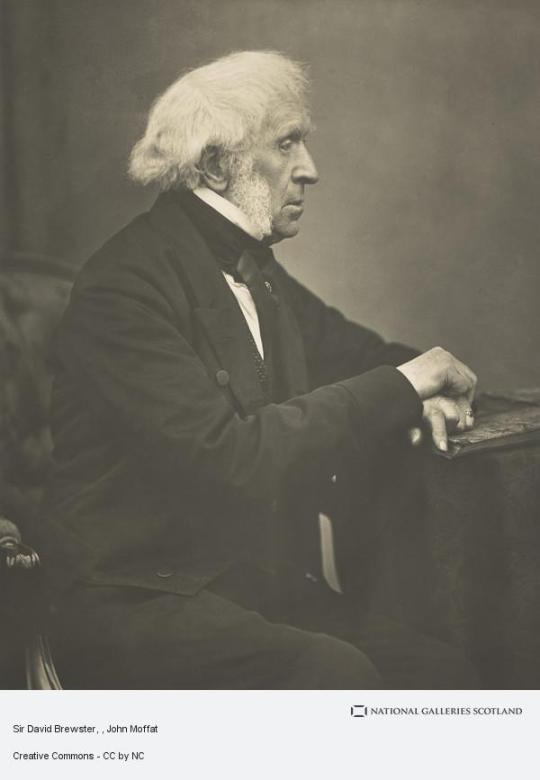
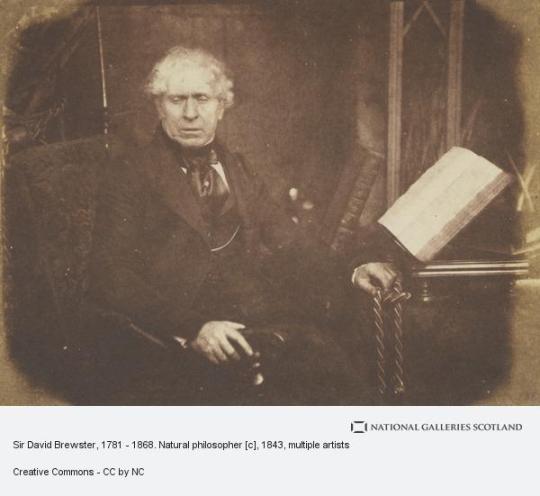
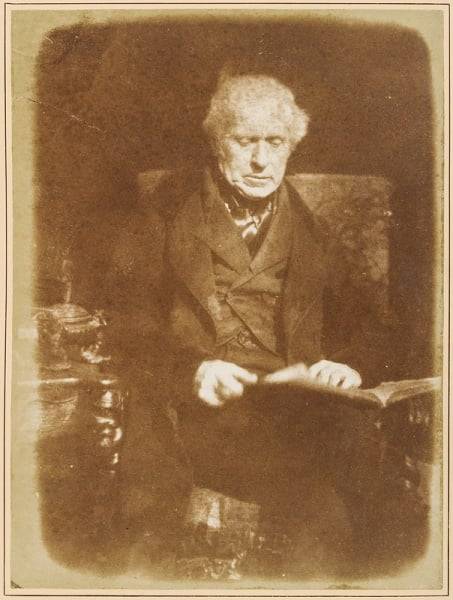
On December 11th 1781 David Brewster was born.
Born in Jedburgh, Roxburghshire in 1781, to James Brewster, the rector of Jedburgh Grammar School and Margaret Key, he was educated at the University of Edinburgh, graduating MA in 1800. Although he was originally intending to be a Minister. Though a successful preacher in the Church of Scotland, his phobia of public speaking curtailed his involvement in the church. However, his faith continued to play an important role in his life, and his support for the Free Church of Scotland in 1843 nearly led to his dismissal from the University of Edinburgh.
Concentrating on the science of optics, Brewster made significant discoveries about polarisation of light and absorption spectra, invented the kaleidoscope and developed the stereoscope. His religious faith is also thought to have played a part in his scepticism about the wave theory of light.
In his lifetime, he published an impressive 315 scientific papers and articles, mostly on his pet subject of optics. His experiments in polarisation, which represent the bulk of his work, investigated in particular the different forms of polarisation that occur when light is reflected or refracted by various materials. Brewster's investigations of spectra included analysis of Newton's theory of colours and experiments on the absorption spectra shown in light shone through gases, and the similar lines seen in the sun's spectrum. He never abandoned the emission theory of light, and never accepted as true the theory that light was a wave - he preferred to see this as a convenient tool for calculation.
Brewster's invention of the kaleidoscope, popular as the instrument was, brought him little pecuniary benefit because of a botched patent application that left the design unprotected from unauthorised reproduction. He had a keen interest in photography from its infancy, and though he wrote about it and received a medal from the Photographic Society of Paris in 1865, he never found time to experiment properly with the chemistry of light. Brewster also promoted the use of the Fresnel lens in lighthouses, and oversaw a series of successful experiments with these in 1833. Brewster's finances were improved in his later life by his appointment as Principal of the United Colleges of St. Salvator and St. Leonard in St. Andrews in 1837, and his subsequent election by Edinburgh University as Principal in 1859, a post he held until his death in 1868. He was the first layman to occupy this post since Patrick Sands in 1622. Brewster was also a founder member of the British Association for the Advancement of Science and a keen, active participant in it.
David Brewster contracted pneumonia at the age of 87. His life soon to pass, he simply stated, "I shall see Jesus and that will be grand. I shall see Him who made the worlds". On February 10th, 1868, at Allerby, Melrose Brewster did just that.
9 notes
·
View notes
Photo

Astronomers spot benzene in planet-forming disk around star for first time An international team of astronomers including several Dutch researchers has observed the benzene molecule (C6H6) in a planet-forming disk around a young star for the first time. Besides benzene, they saw many other, smaller carbon compounds and few oxygen-rich molecules. The observations suggest that, like our own Earth, the rocky planets forming in this disc contain relatively little carbon. The scientists publish their findings Thursday evening in the journal Nature Astronomy. The researchers studied the young, small star J160532 (one tenth of the mass of our sun) some 500 light years away from us towards the constellation Scorpio. Around such small young stars, many rocky planets similar to Earth form, in disks made of gas and dust. Until now, it has been difficult to study molecules in the warm inner part of these disks where the majority of planets form due to the limited sensitivity and spectral resolution of previous observatories. For their research, the scientists used data from the MIRI spectrometer aboard the James Webb Space Telescope. MIRI can see right through dust clouds and is particularly well suited to measure hot gas in inner disks. The main optics of the MIRI spectrometer were designed and built by the Netherlands Research School for Astronomy (NOVA). "This is exactly the kind of science the MIRI spectrometer was designed for," says Ewine van Dishoeck (Leiden University), who has been involved in building Webb and the MIRI instrument from the beginning. "The spectra contain a wealth of data that tell us something about the chemical and physical composition of planet-forming disks." Lots of carbon gas, little oxygen Besides the first ever observation of benzene in a planet-forming disk, the researchers also saw the hydrocarbon diacetylene (C4H2) for the first time, and an unusually large amount of acetylene gas (C2H2), a very reactive hydrocarbon. Strikingly, there is very little water and carbon dioxide in this disc. Those oxygen-rich compounds are often found in other dust discs, though. Identifying these molecules required close collaboration with chemists who measure the spectra (the chemical fingerprints) in the laboratory. The researchers suspect that the benzene and (di-)acetylene are released in the disc following the destruction of carbon-rich dust grains by the active young star. The dust grains that remain would contain silicates with relatively little carbon. In a later phase, the low-carbon grains clump together into larger chunks. These eventually become rocky planets like Earth. This scenario may explain why our own Earth is so poor in carbon. Fifty discs to go Meanwhile, the researchers are working out the data from over 30 other dust discs around young stars and data on 20 more discs are expected this year. In doing so, they are expected to discover other molecules and gain more knowledge about the formation of planets around stars from the very smallest ones to those that are 2-3 times the mass of our sun. Lead author of the study Benoît Tabone (now CNRS researcher at Université Paris-Saclay in France and previously affiliated Leiden University) concludes: "This work is only a first glimpse of the physical and chemical conditions in which earth-like planets like our Earth are formed." Co-author Aditya Arabhavi, PhD student at the University of Groningen, adds: "Many more molecules will be discovered, either in the disk of J160532 or in other disks. Webb is a 'playground' not only for astronomers, but also for experts in molecular physics." IMAGE....The MIRI spectrum of J160532. The emission lines of benzene, diacetylene and carbon dioxide can be seen as narrow peaks in the spectrum. Acetylene (C2H2) is so abundant that it gives broad humps in the spectrum. Interestingly, there is no water in the disk. (c) JWST/MIRI/Tabone et al.
19 notes
·
View notes
Text
All about Wolf-Rayet stars
Some facts about Wolf-Rayet Stars
Wolf-Rayet stars are named the ‘most massive and brightest stars known’. This is because their temperatures start at 30,000 degrees celsius. They also have strong stellar winds which blow away their outer atmospheres, revealing the stars’ inner layers. Blowing at over ten million miles per hour, the stars shed about 2 thousand billion billion tons of material every year. That’s equivalent to the mass of three Earths! Since these stars have trouble holding themselves together, they don’t last very long, burning up their fuel quickly and blasting mass into space, eventually tearing themselves apart. They are usually members of binary stars with O or B stars (types of stars classed by temperature) as companions.vd
The discovery
The French astronomers Charles Wolf (1827-1918) and Georges Rayet (1839-1906) co-discovered this type of unusual, hot star, which are now named after them. They discovered Wolf-Rayet stars by using the Paris Observatory’s 40cm Foucault telescope in 1867 to observe three stars whose spectra had strong, broad emission lines, but few absorption lines, which is unusual for stars.
For decades, the reason for these emission bands remained a mystery. Eventually, it was discovered that these lines resulted from the presence of helium, which was discovered in 1868, one year after the original observation. E.C.Pickering also compared Wolf-Rayet spectra with nebula spectra, and noticed similarities between them. This led to his discovery that some or all Wolf-Rayet stars are in the centre of nebulae.
In 1929, doppler broadening (the broadening of spectral lines due to the Doppler effect caused by a distribution of velocities of atoms or molecules) was being used to explain the width of the emission bands. It was concluded that the gas surrounding Wolf-Rayet stars must be moving with velocities of 300-2400 km/s, and therefore they are continually ejecting gas into space. This produces an expanding envelope, or bubble, of nebulous gas. The force that ejects this gas was then discovered to be radiation pressure.
Later, Rayet became Director of the Bordeaux Observatory, and to this day, we have discovered over 500 Wolf-Rayet stars in our galaxy.
About the most massive star, R136a1, which is a Wolf-Rayet star
R136a1 is the most massive star known, which is a Wolf-Rayet star. It is 163,000 light years away from the Sun, and is located in the Large Magellanic Cloud. It is also part of the R136 super star cluster, and has the mass of 315 suns. Despite being the most massive star known and shining 9 million times brighter than the sun, it requires a telescope to see. An interesting fact about R136a1 is that it defies what scientists know about how stars form. A popular hypothesis among scientists is that R136a1 did not form directly from the collapse of a molecular hydrogen cloud, but rather from two massive stars colliding.

About WR 124, a Wolf-Rayet star
WR 124 is 15,000 light years away from the Sun. Its spectral type is WN, meaning it falls into the hottest ‘O’ spectral type of stars, but is referred to as ‘W’ from Wolf-Rayet. The ‘N’ means it shows strong emission lines of nitrogen. WR 124 is the glowing star in the centre of a huge, fiery nebula. WR 124 has a surface temperature of around 50,000 degrees celsius, and is one of the hottest known Wolf-Rayet stars. It is a massive, unstable star which is blowing itself apart. Its material is travelling at up to 150,000kph. The nebula that surrounds the star, M1-67, consists of vast arcs of glowing gas which is violently expanding outwards into space. M1-67 is quite young, only 10,000 years old, and it contains clumps of material within it with masses 30 times the mass of Earth and diameters of 150 billion km.

WR 7, another Wolf-Rayet star
WR 7 is also 15,000 light years away from the Sun. It produced the emission nebula NGC 2359, which is also known as Thor’s Helmet because it looks like a helmet with wings. The nebula has a diameter of around 30 light years, and has WR 7 at its centre. Its surface temperature is between 30,000 degrees celsius and 50,000 degrees celsius, which is 6 to 10 times the temperature of the sun. It is an incredibly unstable star, ejecting stellar material into the interstellar medium at speeds which approach 7.2 million kph! Even though it is a massive star, it loses the mass of the Sun every thousand years. Material ejected from the star is done so in a spherical manner, which produces a bubble of material. This bubble has been shaped further by its interactions with the surrounding interstellar medium. WR 7 lies at the edge of a dense, warm molecular cloud, which is unusual.

6 notes
·
View notes
Note
Tell us more about your MH DR! (If you want)
Like fave memories? Fave classes? Who do you get along with the best and who do you get along with the least? What is the world like? Unexpected things you did not expect to see in your DR? Also how did Draculaura and Clawdeen end up dating anyways? TELL US EVERYTHING. I’m so curious.
Sure!!
Fave classes: Even though I don't like Rotter himself, I love Dead Languages! Ghoulish Literature is fun too :) Mostly cause Mr. Clamdestine is fucking insane and he's genuinely one of the most fun teachers there.
Fave memories: Oh gosh... where do I start... The entire Scaris trip was an absolute blast! I scripted that Toralei wasn't mean to me so I didn't particularly mind her being there and I had a lot of fun shopping with her when she wasn't trying to piss everyone off. Draculaura and I went to so many cafes there too! And... not to sound cheesy and bring him up again, but a memory that I always replay in my head is when Clawdeen found out about Clawd and I dating and just how supportive she was of it. She immediately threatened to pull his fur out if he did anything to hurt me and warned me about how devoted werewolves can be. Even though it was very intense, it's a heartwarming memory and I still think it's really cute how she managed to warn both of us!
I get along really well with everyone! I didn't want to deal with any drama there so I scripted that I was chill with everyone and that no one bothered me. Out of the main ghouls, Lagoona and I click really well! We have the same sense of humor and our energy levels match too. There's really no one that I don't get along with but I will say that Spectra and I didn't always see eye to eye. I'm not super fond of how nosy she can be and how quick she is to spread things without fact checking. Our relationship definitely got better after she realized how important it is to be a reliable news source (I believe that also happened in the movies or show?).
The reality is really nice! I scripted out monster vs monster racism and human vs monster racism so it's pretty chill! There's so much monster history too that not everyone knows! Like there are some things that certain monsters haven't really explained or told any other monsters about so there's still an air of mystery. It's also really fun to see the differences and similarities between monsters and humans! Especially the monster city and human city counterparts (like Scaris and Paris)!
Unexpected things... maybe how advanced monster technology was? I don't why but for some reason, I thought it was going to be very 2000s esque but their tech is actually a few years ahead of humans!
How Draculaura and Clawdeen got together is actually so cute!! A little messy but cute! They basically both had massive crushes on each other but they assumed the other liked someone else. Clawdeen actually assumed that Laura liked Clawd and Laura thought Clawdeen liked Lagoona. Draculaura was also constantly trying to get Clawdeen to confess who she liked which didn't help cause obviously she wasn't ready to confess to Draculaura but she didn't want to lie. So Draculaura would get upset because they're best friends who literally tell each other everything so she didn't understand why Clawdeen was being so secretive (they always told each other about their crushes before). Anyway, it was obvious to literally everyone but them that they liked each other so we pulled a classic "we planned a secret date for you trust me you'll like them :)))" and then plopped them down at their favorite restaurant together! They didn't confess there but they did have a sleepover that night where they did. They never actually told us the specific details (I'm still amazed that Laura hasn't spilled yet) but I don't mind since they're cute. We were kinda worried the plan wasn't going to work but Clawdeen walked in blushing and we knew it did 😌 (they're fucking adorable bro please 😭)
Let me know if you want to know anything else! I love talking about my MH DR 🥰
15 notes
·
View notes
Text
Webb Finds Dwarf Galaxies Reionised The Universe - Technology Org
New Post has been published on https://thedigitalinsider.com/webb-finds-dwarf-galaxies-reionised-the-universe-technology-org/
Webb Finds Dwarf Galaxies Reionised The Universe - Technology Org
Using the unprecedented capabilities of the NASA/ESA/CSA James Webb Space Telescope, an international team of scientists has obtained the first spectroscopic observations of the faintest galaxies during the first billion years of the Universe. These findings help answer a longstanding question for astronomers: what sources caused the reionisation of the Universe?
Pandora’s Cluster (Abell 2744). Image credit: NASA, ESA, CSA, I. Labbe (Swinburne University of Technology), R. Bezanson (University of Pittsburgh), A. Pagan (STScI)
Much remains to be understood about the era of reionisation [1], a period in the universe’s early history. It was a period of darkness without any stars or galaxies, filled with a dense fog of hydrogen gas, until the first stars ionised the gas around them, and light began to travel through. Astronomers have spent decades trying to identify the sources that emitted radiation powerful enough to gradually clear away this hydrogen fog that blanketed the early Universe.
The Ultradeep NIRSpec and NIRCam ObserVations before the Epoch of Reionization (UNCOVER) programme (#2561) consists of both imaging and spectroscopic observations of the lensing cluster Abell 2744. An international team of astronomers used gravitational lensing by this target, also known as Pandora’s Cluster, to investigate the sources of the Universe’s period of reionisation. Gravitational lensing [2] magnifies and distorts the appearance of distant galaxies, so they look very different from those in the foreground.
The galaxy cluster ‘lens’ is so massive that it warps the fabric of space itself, so much so that light from distant galaxies that passes through the warped space also takes on a warped appearance. The magnification effect allowed the team to study very distant sources of light beyond Abell 2744, revealing eight extremely faint galaxies that would otherwise be undetectable, even to Webb.
The team found that these faint galaxies are immense producers of ultraviolet light, at levels four times larger than previously assumed. This means that most of the photons that reionised the Universe likely came from these dwarf galaxies.
“This discovery unveils the crucial role played by ultra-faint galaxies in the early Universe’s evolution,” said team member Iryna Chemerynska of the Institut d’Astrophysique de Paris in France. “They produce ionising photons that transform neutral hydrogen into ionised plasma during cosmic reionisation. It highlights the importance of understanding low-mass galaxies in shaping the Universe’s history.”
“These cosmic powerhouses collectively emit more than enough energy to get the job done,” added team leader Hakim Atek, also of the Institut d’Astrophysique de Paris and lead author of the paper describing this result. “Despite their tiny size, these low-mass galaxies are prolific producers of energetic radiation, and their abundance during this period is so substantial that their collective influence can transform the entire state of the Universe.”
To arrive at this conclusion, the team first combined extremely sensitive Webb imaging data with imaging of Abell 2744 from the NASA/ESA Hubble Space Telescope to select extremely faint galaxy candidates in the epoch of reionisation.
This was followed by spectroscopy with Webb’s Near-InfraRed Spectrograph (NIRSpec). The instrument’s Multi-Shutter Assembly was used to capture several spectra of these faint galaxies. This is the first time scientists have reliably estimated how common faint galaxies are. The results confirm that they are the most abundant type of galaxies during the epoch of reionisation. This also marks the first time that the ionising power of these galaxies has been measured, enabling the astronomers to determine that they are producing sufficient energetic radiation to ionise the early Universe.
“The incredible sensitivity of NIRSpec combined with the gravitational amplification provided by Abell 2744 enabled us to identify and study these galaxies from the first billion years of the Universe in detail, despite their being over 100 times fainter than our own Milky Way,” continued Hakim.
In an upcoming Webb observing programme, named GLIMPSE, scientists will obtain the most sensitive observations ever done on the sky. By targeting another galaxy cluster, named Abell S1063, even fainter galaxies during the epoch of reionisation will be identified. This will allow scientists to verify whether the dwarf galaxies in the current study are typical of the large-scale distribution of galaxies. As these new results are based on observations obtained in one field, the team notes that the ionising properties of faint galaxies can appear differently if they reside in denser regions.
Additional observations in a different field will therefore provide further insights and help verify these conclusions. The GLIMPSE observations will also help astronomers probe the period known as cosmic dawn, when the Universe was only a few million years old, to improve our understanding of the emergence of the first galaxies.
Source: European Space Agency
You can offer your link to a page which is relevant to the topic of this post.
#Astronomy news#billion#Capture#cluster#Collective#data#dwarf#dwarf galaxies#energy#ESA#European Space Agency#Evolution#France#Fundamental physics news#galaxies#Galaxy#gas#gravitation#History#how#Hubble#Hubble Space Telescope#hydrogen#Hydrogen gas#Imaging#insights#international team#it#James Webb Space Telescope#lens
0 notes
Text

Retrieved from a photoprint used at the time of Elena Alice's Siderartica debut album (Kirlian Camera project) 🌹🖤🌹
* original shot by Don Angelo
#elena alice fossi#elenaalicefossi#kirlian camera#kirliancamera#side#siderartica#spectra paris#singer#vocalist#lead vocalist#lead#lead snger#electronic rock#post metal#electronica#industrial music#electronic music#post punk#art rock#art pop#post goth#darkwave#avant rock#avantgarde#avantgarde music#musician#music producer#composer#thigh highs#sensuality
2 notes
·
View notes
Text
I work at a boutique fitness studio
One of my friendship metrics is whether or not I can speak to somebody openly about my weight loss. This isn’t to say that anybody who doesn’t speak to me about it is not a good friend. Further, there are many people who do speak to me about it without really speaking; with their upturned lip whenever I mention needing to work out, or the raised eyebrow when I mention my uncanny ability to know how much food weighs just by holding it in my hand (especially if something weighs 28 grammes, which is the standard serving size for crispy crunchy snacks. Here, feel these cheez-its!) But weight is a really strange thing and bodies are very strange things. Being able to speak about these strange things is vulnerable and raw, especially when my body is the corpus through which those dialogues happen. Talking about my weight loss doesn’t necessarily make a friendship better nor healthier. It makes it strange, but, like, in a good way.
I’ve always wanted to write a longer-form piece on what it means to have lost weight, especially in academia. There are at least one hundred Reddit posts and self-help books and podcasts I could name right now that do this very thing, so I haven’t. Like my academic writing, I don’t know what I’m innovating. I don’t know what I am contributing to the literature! In most of these self-help guides, there are lists of the causes and effects of weight loss, as well as the health, societal and societal health benefits of weight loss.
Well, I’m gonna write some stuff down! There are a few weird things that have happened ever since I lost weight. (If you must know, it’s been roughly 100 pounds). Here are those things in no particular order besides that which is weighing on my brain--and my heart, sort of--on this chilly Berkeley night.
1) I am always cold. This one is in most of those aforementioned lists. NOT innovating.
2) I cannot lay stomach-down on a flat surface without my hip bones hurting. Also in the lists, sometimes.
3) I seem to have no more platonic male friends. A lot of the literature talks about very interesting revenge fantasies-come-true, like the one girl who rejected some guy when he was big who he then got to reject when he was thin. Or the girl whose many exes came crawling back after she got lean. But nobody talks a lot about losing male friends.
This one actually hurts. I don’t like to believe it’s true. I spent many years of my larger life with a mixed-gender group of friends. I always cherished my female friendships, but I would also spend hours upon hours at bars with men, one-on-one over innumerable drinks, listening to them speak about their love affairs and girlfriends and families and research. They would listen to me rant about my own shit, like we were playing some game of tortured tennis-- and it was fun. Between Dallas, Austin, Paris, and the East Bay, we’d laugh, we’d cry, or we’d play pool. Sometimes, the metros would close down or Ubers would be too expensive, so we’d light spliffs and sleep on each others’ floors while we coached each other on Tinder.
My friend Ciele was telling me about this book she read that she forgot the name of. It explores various spectra of friendships between platonic and romantic. Essentially, per her summary, “there are friendships that you just sorta keep around with the gender(s) you’re attracted to but they’re never really platonic, cause you always wanna screw each other. But they’re also not romantic. Ya know, they’re somewhere in between,” the binary is cloudy. Or maybe the book’s mission, at least to me, is to convince us that the binary doesn’t even exist.
I don’t know. What I do know is that, since 2019, I have not shared any drinks or dinners after five PM with a guy friend, and I haven’t spent a post-spliff night on any man’s floor. If I did, to quote one guy friend who went AWOL on me in 2020, “their girlfriend would hate me.”
4) More girlfriends hate me. 9 times out of 10 I will befriend the girlfriend and end up being her very good friend. I always enjoy that process! But it is more effort than I used to have to extend, all just to keep the waters from being too choppy.
5) Did I tell you I can weigh cheez-its without a scale? I have a 20% margin of error, but it’s kinda neat.
0 notes
Note
Chloe then starts doing hero stuff in Paris, apprehending criminals, saving people, etc. While she does help with akumas, Ladybug isn't sure she can trust Spectra Knight. Wondering if she's somehow working with Hawkmoth, a third party interested in the Miraculous, or for personal gain.
MM
12 notes
·
View notes
Text

" Paris 2005" - spectra film by Maurizio Galimberti
0 notes
Text

The James Webb Space Telescope reveals the central role of low-mass galaxies in the reionization process of the Universe
The James Webb Space Telescope (JWST)[1], developed by NASA and ESA, has just obtained the first spectra of very low-mass galaxies less than a billion years after the Big Bang. A technological feat made possible by the unique combination of JWST sensitivity and the gravitational lensing effect of the Abell 2744 cluster: nearby galaxies act like cosmic magnifiers, distorting space and amplifying the light of background galaxies. By demonstrating that small galaxies are very likely at the origin of the reionization of the universe, this discovery represents a major breakthrough in our knowledge of the cosmos.
The international research team brought together Ben-Gurion University of the Negev, the universities of Pittsburgh, Swinburne and Texas in Austin in collaboration with the Paris Astrophysics Institute (Sorbonne University/CNRS).
These results were published in Nature on February 28, 2024.
Reionization, which occurred some 500 to 900 million years after the Big Bang, marks a crucial period in the history of the Universe, following the recombination[2]. It represents the transformation of neutral hydrogen, which predominated in the Universe, into ionized gas. Identifying the sources responsible for this cosmic reionization has given rise to a number of hypotheses. These include supermassive black holes containing gas accretion disks that eject high-energy radiation; large galaxies with masses in excess of one billion solar masses; and small galaxies with masses of less than 1 billion solar masses. Confirmation of the hypothesis relating to low-mass galaxies proved particularly difficult, given their low luminosity.
For the first time, an international research team involving the Paris Astrophysics Institute (Sorbonne University/CNRS) and Ben-Gurion University of the Negev has managed to unravel the mystery by obtaining spectroscopic observations of these galaxies during the reionization period. By analyzing these very low-mass galaxies, comparable to dwarf galaxies in the local Universe, the scientists have demonstrated that small galaxies played a major role in cosmic reionization. The combination of deep observations from the JWST telescope and gravitational lensing amplification of the Abell 2744 galaxy cluster now makes it possible to determine the abundance of small galaxies and their ionizing properties during the first billion years of the Universe.
Hakim Atek, astrophysicist at Sorbonne University and researcher at the Paris Astrophysics Institute, is the first author of this study. He explains: "We found that small galaxies outnumbered massive galaxies by about a hundred to one during this epoch of reionization of the Universe. These novel observations also reveal that these small galaxies produced a considerable amount of ionizing photons, exceeding by four times the canonical values usually assumed for distant galaxies. This means that the total flux of ionizing photons emitted by these galaxies far exceeds the threshold required for reionization."
The researchers now want to extend this study to a larger scale, to confirm that this particular location is representative of the average distribution of galaxies in the Universe.
Beyond the reionization process, their observations are essential to understanding the formation of the very first galaxies, which, over 12 billion years later, would constitute our present-day galaxies.
3 notes
·
View notes
Photo
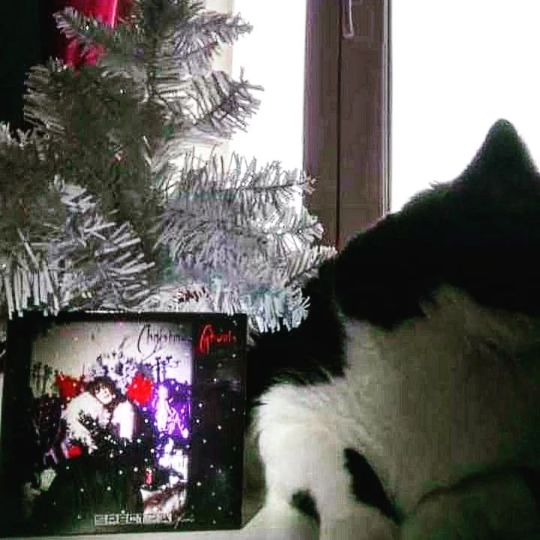
🎄🎄🎄🎄🎄 . Spectra Paris - Christmas Ghouls . @kirlian_camera 🖤 @outoflinemusic1995 🖤 @domino_black_metal_cat 🖤 🐱 #spectraparis #kirliancamera #outofline #outoflinemusic #elenaalicefossi #electronica #artpop #electro #electronicrock #darkpop #glamour #newdisco #industrialmusic #darkelectro #electropop #italy #italia #electronicmusic #gothic #darkmusic #ambient #darkambient #newalbum #newmusic #cdcollector #cdcollection #metalhead #metalheadsofinstagram #cat #blackmetalcat (à Strasbourg, France) https://www.instagram.com/p/CmjZJ83owAw/?igshid=NGJjMDIxMWI=
#spectraparis#kirliancamera#outofline#outoflinemusic#elenaalicefossi#electronica#artpop#electro#electronicrock#darkpop#glamour#newdisco#industrialmusic#darkelectro#electropop#italy#italia#electronicmusic#gothic#darkmusic#ambient#darkambient#newalbum#newmusic#cdcollector#cdcollection#metalhead#metalheadsofinstagram#cat#blackmetalcat
0 notes